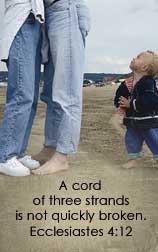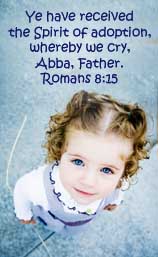 |
| www.everwell.com |
So here goes...
Fevers:
Common Concerns...
Critical things you should know off the top...
You should call your child's PHYSICIAN IMMEDIATELY IF ANY ONE OF THE FOLLOWING EXISTS:
1. Age less than 3 months with fever 100.4 (R) or higher
· Notify MD on call for age <3 month with fever >100.5 post immunizations before sending to the ER.
· Refer to client profiles for additional instructions
2. Immunocompromised and fever > 100.5 – oncology patient, s/p spleenectomy, HIV +, anemia, sickle
cell. May refer to Pediatric Hematology/Oncology protocols.
3. Fever is > 105 degrees F rectally or orally
· If temp taken with ear thermometer, must check rectally (preferred) or axillary
for children < 5 years old. If child is older than 5, may check temp. orally
4. Difficulty breathing, not related to nasal congestion, or respiratory distress
5. Altered level of consciousness - difficult to arouse, confused or delirious
6. Any seizure activity with fever
7. Severe irritability - constant crying or whimpering
8. Stiff neck (not able to move at all or causes pain down spine if moved), not painful neck
9. Deep red or purple spots that do not blanch
10. Signs of Dehydration
· Decrease in urine output ( no urine production in past 8 hrs. if under 1 year old – no urine production in past 12 hrs. , if over 1 year old)
· Dry mouth
· No tears present while child is crying
11. Tick bite in the last two weeks
Now on to some
General Information:
Many parents have an unwarranted fear of fevers that all children experience. 80% of parents think fever between 100-106 could cause brain damage; and if they do not treat aggressively it would keep going higher. Because of these misconceptions, many parents spend sleepless nights worrying about their child’s fever and treat low-grade fever needlessly.
A fever is defined as Rectal or Temporal (forehead) > 100.5 F, oral >99.5 F or axillary > 99 F. Tactile fever (child feels hot and the temperature has not been measured yet – no thermometer usually) is acceptable. 84% of mothers can accurately predict the presence of a fever and therefore at most triage centers it is accepted.
Pacifier temperatures are not reliable for children < 6 months. The new digital electronic pacifier thermometers are reported to be accurate (?) as they record temperature with a heat sensor but take an average of 3 minutes to obtain a steady state. These are okay for screening purposes or to track fever.
Glass thermometers have been the standard since 1870 and are less expensive. However they are slow and hard to read. These are NOT any more accurate then the new digital electronic thermometers which can be read in 30 seconds and the reading is displayed in LED numbers on a screen. Most of these internally convert the reading. It is not necessary to add or subtract anything from the actual reading. Many moms will add a point when talking to the pediatrician or nurse and this is not necessary. Simply tell them the number on the thermometer and where you stuck the thermometer.
Ear thermometers can be as accurate as a rectal temperature, but a lot of factors can influence the reading and should not be used if suspected ear infection or head congestion. They are expensive but are read in 2 seconds. If child is <2 y.o the temperature should be rechecked rectally. If using a Temporal thermometer, simply scan across the forehead. Temporal thermometers or ear thermometer, it can sometimes be helpful to take 2 or 3 readings and average them together.
Rule of thumb: birth to 5 – rectal; axillary or ear for screening; >5 y.o. oral is okay.
Rectal is the most accurate. Oral (electronic pacifier) or tympanic are accurate IF done properly. Axillary is better than no measurement at all. Tactile temps 84% accurate.
Fever is beneficial:
- Helps body fight infections.
- Turns on the body’s immune system.
- May shorten the course of the illness.
- Causes no symptoms until it reaches 102-103 F.
- Causes no permanent harm until it reaches 107 F.
- Even without treatment, fevers rarely go higher than 104 – 105 F.
- Only 4% of children have a febrile seizure; they usually stop within 5 minutes and cause no permanent harm.
- Fevers only need to be treated if they cause discomfort. Fevers from infection will top at 105 F or lower, owing to the brain’s thermostat.
- Treatment usually only lowers fever 2-3 degrees, usually best to use only 1 antipyretic at a time.
- If temperature does not decrease with Tylenol q4hr, may switch to Ibuprofen q6hrs.
- If temperature is consistently > 102, not responding to treatment with 1 antipyretic such as tylenol or motrin if older than 6 months and febrile > 24 hours you may alternate Tylenol with Motrin at q3hr intervals. This should never be the first course of treatment of fever, though. Ask your pediatrician for specific recommendations.
- Fevers that do not come down with treatment may be caused by viruses or bacteria and does not relate to the seriousness of the infection.
- If the child acts and looks sick, then the fever is serious.
- The exact number of the fever is not as important as HOW THE CHILD LOOKS AND ACTS; if active and responsive, the child is coping with the fever.
- Normal diurnal variations of temperatures often peak in late afternoon and evening –99.5-100.4 F can be normal.
ADVICE: What can you do as a mommy...
1. Increase your child’s fluids (includes Popsicles, any juices, milk, and water). No need to force fluids. They are at risk for becoming dehydrated with a fever. Make sure they are urinating every 8-12 hours while running a fever.
2. Dress your child comfortably and do not overdress.
· Clothing and blankets hold the heat in the body and can cause the fever to rise.
· If he gets cold or has chills, give him a light blanket.
3. Fever reducing medications are not recommended unless the fever is >102 and/or the child is uncomfortable. They usually will not bring the fever back to normal, just reduce it and make the child more comfortable.
· Double check to make sure you have the correct Tylenol/Motrin dosage for your child's weight and the concentration on hand. Tylenol/Motrin is available in multiple concentrations and you have the potential of overdosing your child if your not sure.
· May use Acetaminophen for child > 3 months; give dose based on weight q 4-6 hours
o Please be aware that Triaminic and PediaCare make plain Acetaminophen. Always verify ingredients if unsure of OTC brands of Acetaminophen and/or Ibuprofen.
· May use Ibuprofen if > 6 months old.
· Do not give aspirin until late teens
4. If fever is >102 for more than 24 hours and not responsive to one medication alone, you may alternate Acetaminophen and Ibuprofen every 3 hours for only 24 hours. Ask your pediatrician about this, some would not advise alternating.
5. Sponging:
· Refer to Client profiles for specifics/exceptions
· DO NOT add rubbing alcohol to the water; it can cause a coma if breathed in by your child
· If your child is still uncomfortable or the fever is more than 104 degrees 1 hr after drugs have been given, he can be sponged or partially submerged in lukewarm water (85 - 90 F).
· Always give fever medicines before sponging; otherwise, the fever will quickly return to the previous level.
· Sponging can be carried out for periods of 15 - 20 minutes as often as necessary.
· Do not expect to get your child's temperature down below 101 degrees F.
· A common error is to use water that is too cold, which causes shivering. If your child begins to shiver, raise the water temperature or stop the sponging and use a cool washcloth on the forehead instead.
· If the child screams or fights the sponging/bath, take him out or stop as this with counteract the benefits of the sponging/bath.
SERIOUS CAUSES OF FEVER WHICH CAN BE LIFE-THREATENING
- Meningitis - Of all the bacterial and viral infections, meningitis causes the most serious complications. Young children have fever, irritability or profound lethargy, bulging fontanel, vomiting; some have inconsolable cry that worsens when held or moved. Also severe headache and photosensitivity.
- Epiglottitis – usually caused by Haemophilus influenza B infection of epiglottis and causes fever, drooling or spitting, great difficulty swallowing or refusal of fluids, and a severe sore throat. Inspiratory stridor, tripod position and retractions.
- Pneumonia – Tacynpnea (usually anything > 60 in infants, > 40 children, >30 teens), fever and cough; can have respiratory distress with retractions. Bacterial pneumonia is more toxic than viral
- Rocky Mountain Spotted Fever – Starts with fever, chills, headache and myalgia. Rash starts on 3rd to 6th day of illness. Rash is in the form of petechiae, most often found on the distal extremities, especially wrist/palm or ankle/soles. Headache and confusion then develop. Usually tick must be embedded 6 hours to transmit disease.
- Meningococcal Infections – Main symptoms are fever, chills, and scattered petechiae. In fulminant cases the patient develops scattered purpura, weakness, and rapid-onset shock. With meningitis, there is also a headache and stiff neck, and shock is less likely
- Heat Stroke - Symptoms are hot, flushed skin; high fever, absence of sweating, con fusion or unconsciousness, and shock. The onset usually is very rapid. Heat stroke is caused by excessive heat (i.e. locked in hot car)
- Sepsis (infection through out the blood stream) – Most children are very weak or toxic. Too weak to stand or have pale or gray extremities. Children with immune deficits – sickle cell, HIB, cancer – need to be evaluated quickly whenever they develop a fever.
COMMON CAUSES OF FEVER REQUIRING MEDICAL TREATMENT
· UTI – Fever, chills, wetting, dysuria, urgency, bad odor to urine.
· Bacterial Sinusitis – Superinfection of cold is heralded by return of fever and onset of sinus pain and pressure. However green nasal drainage does not always indicate a sinus infection.
· Dental Abscess - Severe tooth pain, throbbing tooth pain, irritated gums, tooth tender to percussion and may have pimple on gum.
Pediatrician may wan the child taken to the emergency room immediately if:
Birth to 3 months - > 100.5 F, or acts sick at any temperature.
> 3 months old with fever of 105 F and not responding to antipyretics, and acts sick.
Limp, weak or not moving; difficult to arouse; inconsolable when moved.
Difficulty breathing, not associated with fever (fever will increase HR and Resp).
New onset of drooling or unable to swallow.
Rash – purpura or petechiae.
Child is confused, had a febrile seizure or won’t move extremities; nuchal rigidity.
Poor fluid intake, dehydration.
Child sounds sick and mom is highly concerned.
Your child's pediatrician may want to see your child the next day if one of the following exist:
1. Age 3 – 6 months with fever of 101 F or higher
2. Age 6 - 36 months with temperature of 102 F (38.9 C)
3. Children of any age whose temperature is 104ºF (40ºC) or greater
4. Fever persisting for greater than 72 hrs.
5. Fever that's gone away for over 24 hrs and then returned.
6. If any specific site seems to be the location of the infection i.e. cuts, sinus, UTI, URI, or ears.
Temperature Conversion
To convert Celsius to Fahrenheit: (9/5 x temperature)+ 32
To convert Fahrenheit to Celsius: ( temperature-32) x 5/9
Celsius Fahrenheit Celsius Fahrenheit
34.2 93.6 38.6 101.4
34.6 94.3 39.0 102.2
35.0 95.0 39.4 102.9
35.4 95.7 39.8 103.6
35.8 96.4 40.2 104.3
36.2 97.1 40.6 105.1
36.6 97.8 41.0 105.8
37.0 98.6 41.4 106.5
37.4 99.3 41.8 107.2
37.8 100.0 42.2 108.0
38.2 100.7 42.6 108.7
Need a video... click on the links below:
Here is a link to WebMDs directory on children and fevers.
I often receive the question
"can teething cause a low grade fever?"
Some pediatricians will tell you yes and some no. Also pulling at the ears is also an indication of teething and not always an ear infection. If your child only has a low grade fever (less than 100.5) and some loose stool it could just be teething. I would highly recommend monitoring your child for other signs and symptoms like a runny nose, rash or low urine out put.
It may simply be teething or it could be something else. Until you get to know your baby sometimes it is hard to tell and a simple glance into the ears by their pediatrician can ease your worries.
I truly hope that this helps and is a solid source for you to come back to incase your child develops a fever. Of course when in doubt, call your child's pediatrician.
I often receive the question
"can teething cause a low grade fever?"
Some pediatricians will tell you yes and some no. Also pulling at the ears is also an indication of teething and not always an ear infection. If your child only has a low grade fever (less than 100.5) and some loose stool it could just be teething. I would highly recommend monitoring your child for other signs and symptoms like a runny nose, rash or low urine out put.
It may simply be teething or it could be something else. Until you get to know your baby sometimes it is hard to tell and a simple glance into the ears by their pediatrician can ease your worries.
I truly hope that this helps and is a solid source for you to come back to incase your child develops a fever. Of course when in doubt, call your child's pediatrician.
Kleigman, Behrman. Nelson Essential of Pediatrics, pp. 366-374 4th Edition, Saunders, 2004
Pin It






































No comments:
Post a Comment